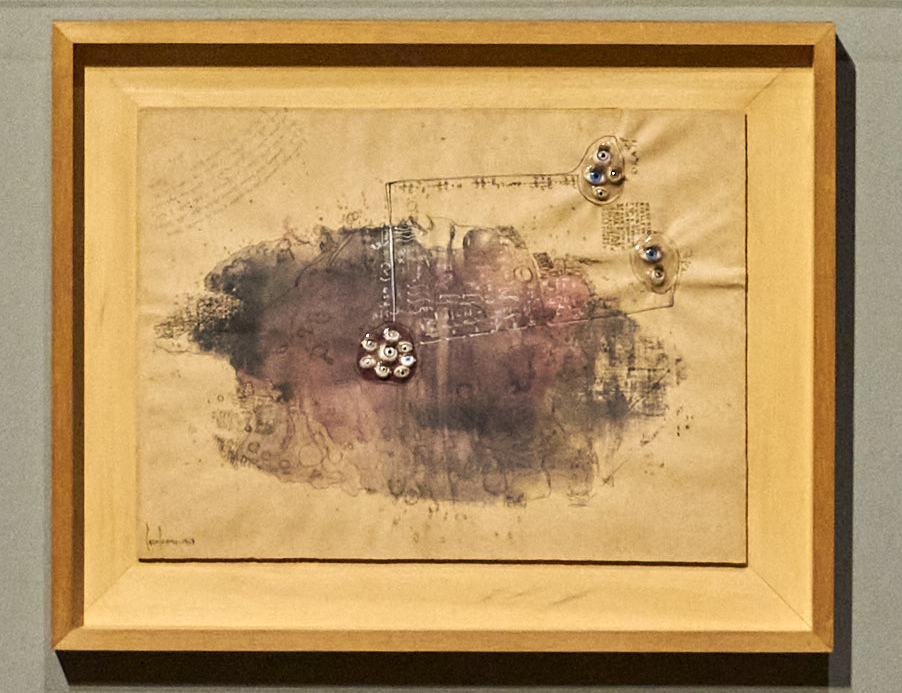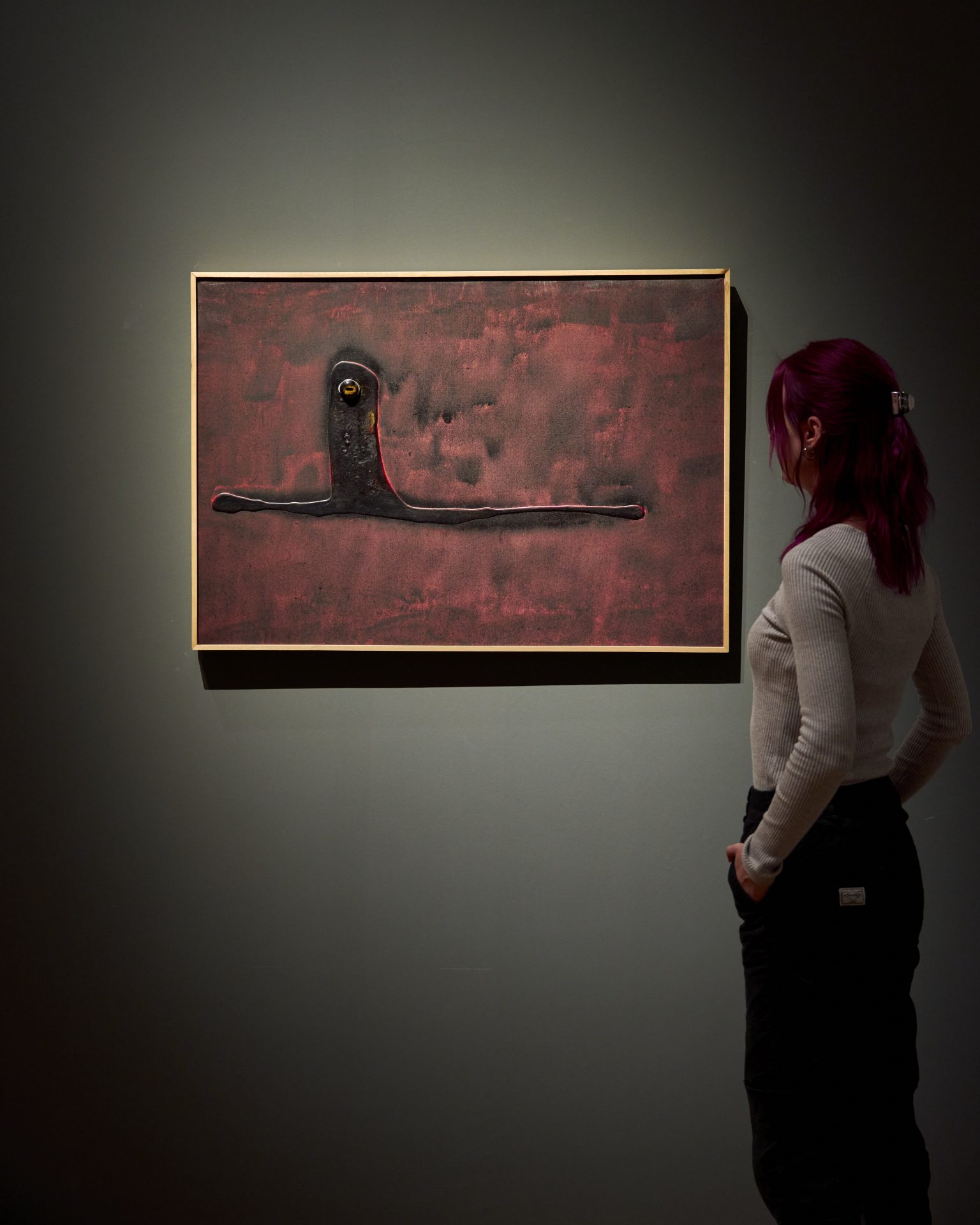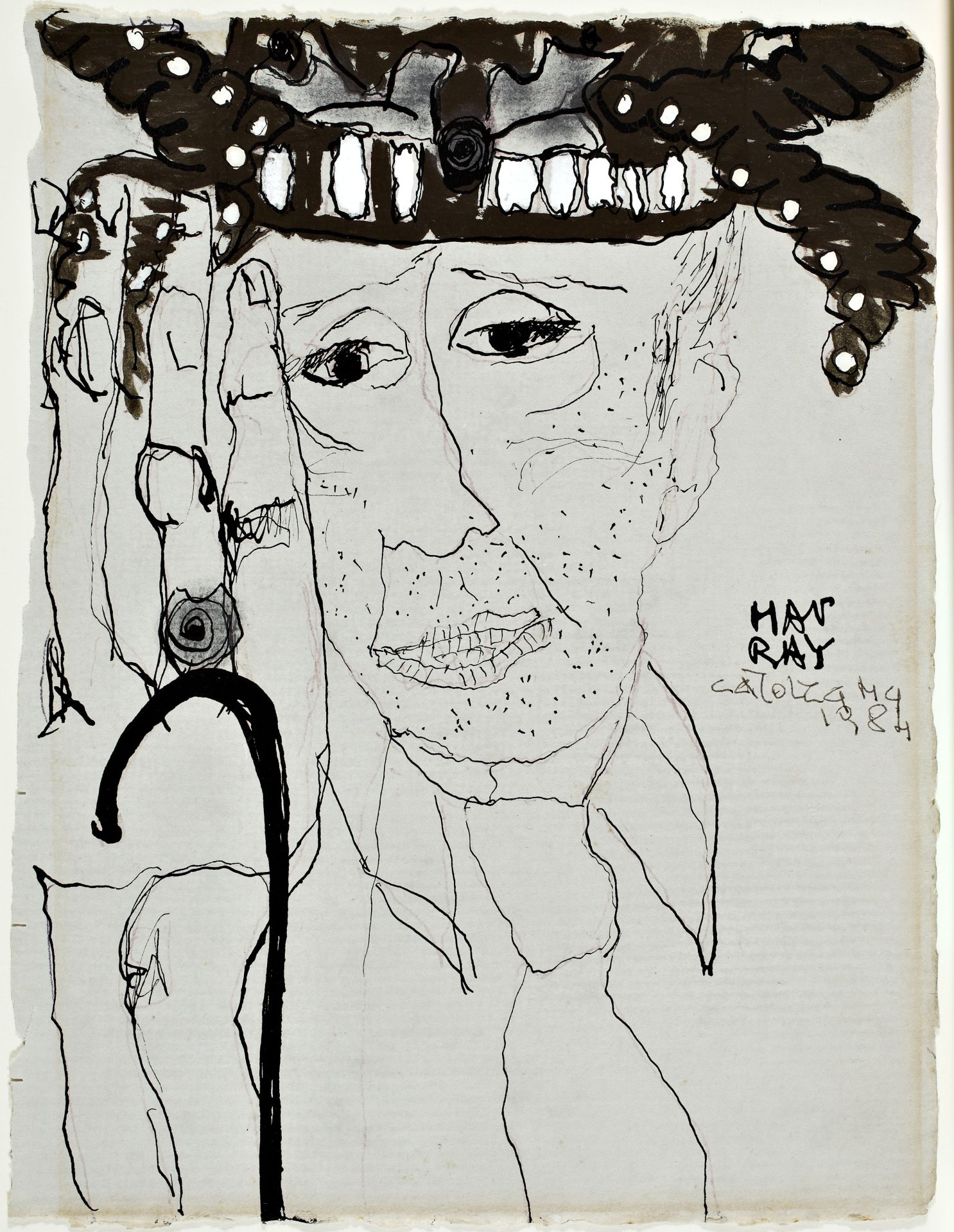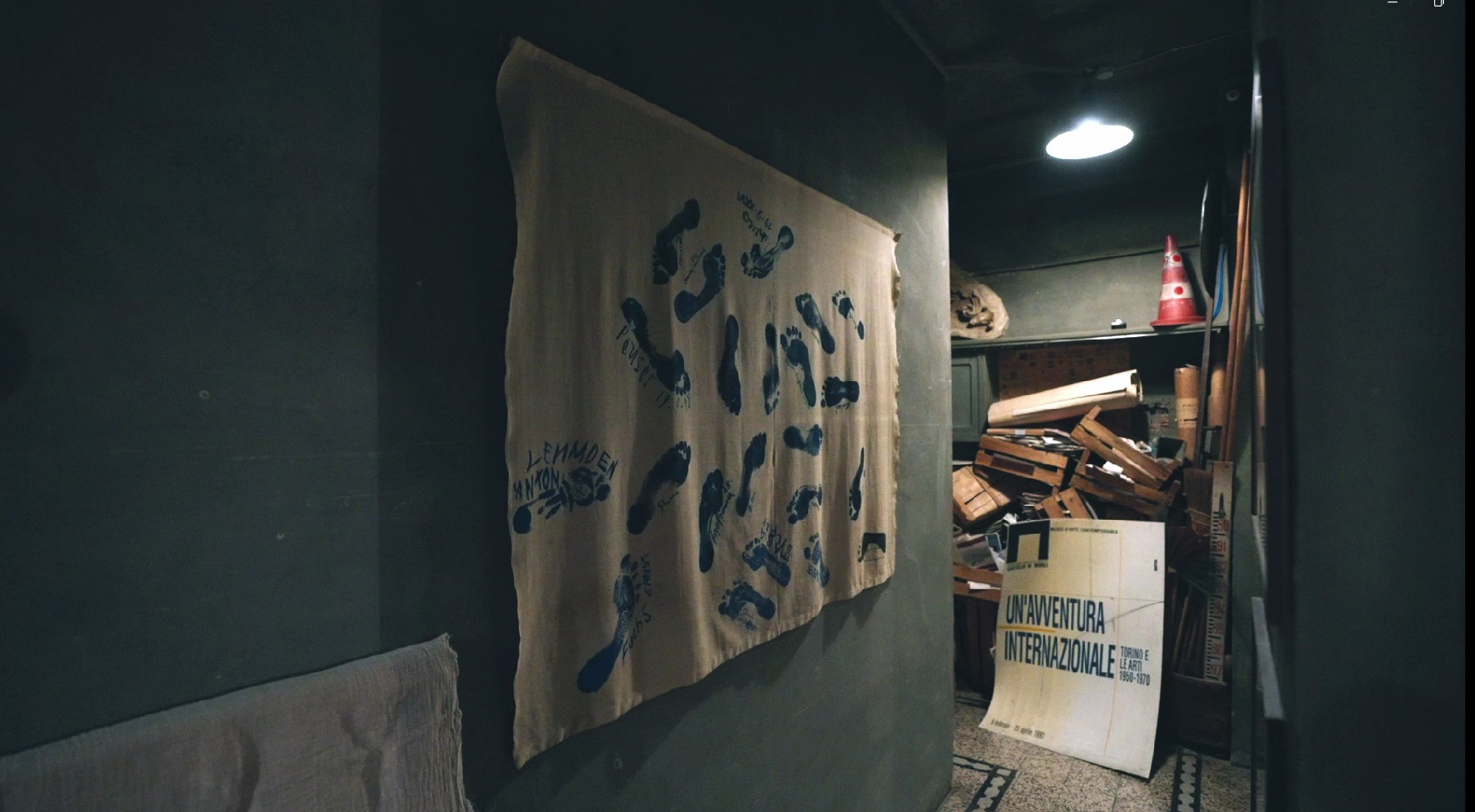Intellectuals and creative minds alike:
Carol Rama’s network
01/23/2025
5 min reading time
As of the late-1940s, Carol Rama regularly hosted salons in her studio apartment in Turin. In the course of her long artistic career, she frequently met celebrities at exhibitions, events, and on her travels. So, what were the social circles in which Rama moved?
Lorem Ipsum
To this day, a canvas hangs in Carol Rama’s studio in Turin resplendent with footprints in blue paint. It is testimony to the visitors she welcomed there between 1947 and 1953. They appended their signatures next to their footprints: Felice Casorati, neo-Classicist painter and an early patron of Rama, is considered one of the best-known Turin artists; Daphne Maugham-Casorati, his wife, was likewise a painter and the niece of British author William Somerset Maugham; Rama’s friends, artists Albino Galvano and Paola Levi-Montalcini were like her members of the “Movimento per l‘ Arte Concreta” artists movement. International guests likewise left their mark, such as Viennese artist and co-founder of Fantastic Realism, Ernst Fuchs.

Encounters and friendships in Turin
As of the end of the 1940s, Rama regularly hosted salons in her Turin studio apartment. In fact, she was superbly networked in her native city. In addition to organizing her own parties, she often visited exhibitions and events where she met not only prominent local celebrities but also many of the intellectuals and creative minds of Turin; some of them were to become lifelong friends. Among them was, for example, Massimo Mila, a musicologist and member of the Italian Resistance who in the mid-1930s was arrested and sentenced to seven years in jail for his anti-fascist activism against the Mussolini government. He spent his time in jail, among other things, translating Johann Wolfgang von Goethe’s “Elective Affinities” into Italian. After his release, he used his freedom to devote himself to translating Hermann Hesse’s “Siddhartha” and joined the partisans.

Lorem Ipsum
In the post-War years, Rama also got to know the author Edoardo Sanguineti, who became one of her closest friends and creative companions. In the 1960s, Sanguineti coined the term bricolage to describe Rama’s works in which she combined painting with everyday objects such as doll’s eye, syringes, and cigarette holders. Sanguineti borrowed the term from Claude Lévi-Strauss’ book “La pensée sauvage“ (“The Savage Mind”), who deployed it to portray the improvising process used by indigenous cultures who lived ‘beyond civilization’. Sanguineti transfers the possibilities for associative work and free combinatorics to the work of his friend Carol Rama. In some of the bricolages there are handwritten lines from his poems, such as in the upper lefthand corner of “XCV – C’è un altro metodo, per finire“ (1967).
In her bricolage entitled “Omaggio a Carlo Mollino” (1969), which she dedicated to her friend Carlo Mollino, a creature with taxidermal eyes looks out at us. Across from Rama’s studio you can now view a city apartment for which the Italian architect and designer created an eccentric interior. In his profession in architecture, Mollino was involved among others in building Turin’s Teatro Regio and its Camera di Commercio. In his work, Mollino was often inspired by nature – he was an enthusiastic amateur pilot, skier, and hiker.


Links to the international art scene
In the early 1970s, through her gallerist Luciano Anselmino also got to know international art stars, such as Man Ray and Andy Warhol. A vibrant artistic exchange unfolded in particular between Rama and Man Ray, as is attested to by Man Ray’s poem “La femme de sept visages” and Rama’s 1984 portrait of him. Both were linked by their interest in everyday objects taken out of the context in which they were customarily used, by their fascination in all things deviant, curious, and unorthodox, and in a specific understanding of art: the transformation of the seemingly trivial into something magic. Rama embarked on many trips during this time accompanied by Anselmino and Man Ray: to New York, Paris, Saint-Tropez, or to Fregene nr. Rome, where they meet Pier Paolo Pasolini, who had just completed shooting “The 120 Days of Sodom”.
The many footprints on the canvas in Rama’s studio thus reveal only a small selection of people from the diverse artist and intellectual circles in which she moved. Be it longstanding friendships or one-off encounters, Carol Rama always asserted her independence, but she was by no means a loner.

